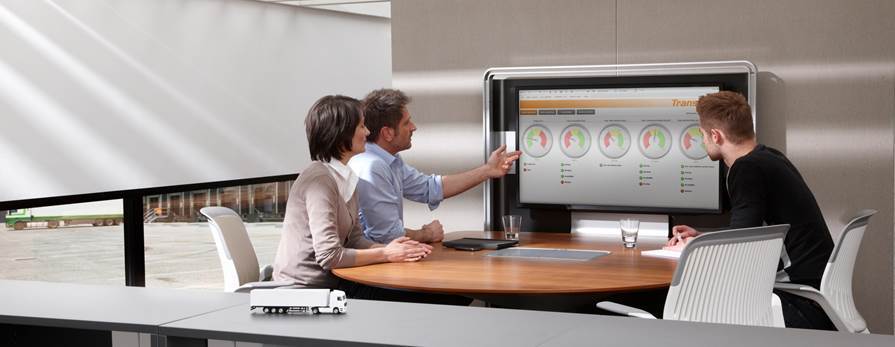Zarządzanie potrzebami grup zainteresowanych – czy to klientów, czy zarządu – stanowi istotę pracy menadżerów floty. Poznaj przydatne porady WABCO dotyczące zarządzania flotą samochodową.
Meeting the needs of your stakeholders, managing their expectations and ensuring they are fully informed at all times is one of the main roles of any fleet manager. Stakeholders can be both internal and external, but all help to support the business, whether it’s through shaping key strategic decisions or investing in products and services. Some of the key stakeholders you may work with will include:
- Board of directors
- Shareholders
- Senior managers
- Suppliers
- Drivers
- Customers
- Software and other technology suppliers
Keeping all these interested parties satisfied and working smoothly together is an often-overlooked part of a fleet manager’s role and one that requires a number of different skills to get right.
Satisfying all your stakeholders may sound like a difficult task, but there are plenty of solutions you can put in place to ensure you manage their expectations and needs in the right way.
Jak zrozumieć grupy zainteresowane
The first step in managing the needs of stakeholders is to understand who they are, what they do and how they impact your responsibilities and the performance of your fleet. The second is to know their needs and requirements and the third is to manage them effectively, through communication, delivering on promises and keeping everyone as happy as possible.
Your performance as a fleet manager can influence things like:
- Costs and expenses
- Environmental impact
- Company performance
Your job is to understand how you can positively impact stakeholders in these areas – by learning what they want from you. Certain stakeholders, like your drivers, will want to be treated fairly and compensated for the work they do, while others will want to see a return on their investment. Defining who needs what and how you can impact this plays a big part in effectively managing stakeholders and addressing their needs.

Jak lepiej zarządzać grupami zainteresowanymi w ramach floty samochodowej
Satisfying all your stakeholders may sound like a difficult task, but there are plenty of solutions you can put in place to ensure you manage their expectations and needs in the right way. This can be through installing technology, improving lines of communication or making key decisions that influence performance in a way that matters to them.
1. Increase fleet efficiency
Running your fleet smoothly gives you the best possible start. It shows you’re in control of things and has an immediate, measurable impact on costs and profit for all stakeholders. Getting deliveries out securely and on time will satisfy your customers too. If they are satisfied, then your shareholders and directors will be.
Oprogramowanie do zarządzania flotą samochodową w rodzaju TX-CONNECTpomaga zwiększyć efektywność, podając na bieżąco informacje dotyczące ciągników, naczep i kierowców. Dane archiwalne na temat parku pojazdów można analizować pod kątem nieefektywności i wprowadzić ulepszenia przy okazji kolejnych dostaw. Z kolei oprogramowanie TX-DIAGNOSTIX monitorujące stan pojazdów pomaga skrócić kosztowne nieplanowane postoje oraz planować regularne prace serwisowe i naprawy.
2. Create greater transparency
It’s important to show transparency in your work. Connectivity and digitisation enables you to gather information directly from trucks, trailers and drivers to produce reports for senior stakeholders. It also gives you the ability to analyse large amounts of data and make big decisions that are impactful and reasoned.
TX-DASHBOARDS to system ułatwiający monitorowanie danych dotyczących floty samochodów, tworzenie raportów na temat czterech obszarów istotnych dla grup zainteresowanych:
- Customer service
- Driver performance
- Fuel consumption
- Vehicle efficiency
Having all this data improves the transparency of your work, helping you to keep stakeholders fully informed about how well your fleet is performing.

3. Satisfy customers
The bedrock of any successful business is a loyal and content customer base. Intelligent fleet software can help you gain insights into the factors that affect customer satisfaction levels.
For example, if deliveries are late, is this an issue with the route, the vehicle or the driver? Use fleet insights to help you determine the cause of this and correct it to ensure a happy customer. Likewise, are you experiencing instances of cargo theft? Try installing security solutions that can increase the safety of any cargo or trucks on your site.
4. Offer training
Well-trained staff are not only happier in their jobs, they’re better representatives for their company. Investing in them can help them deliver a better service, satisfying stakeholders like your customers as well as employees.
You can use data tools to identify training needs – perhaps around customer service or driving in a safe and fuel-efficient manner – and then enroll them in HCV driver training. Showing your team that you value them and delivering training, such as that from the WABCO Academy, is a huge step forward for stakeholder management.
Drivers are your most important assets, so strong stakeholder management of them is vital – especially during times of driver scarcity, when finding replacements can be incredibly hard.
5. Become better connected
Ensuring your fleet is connected has several benefits. It can:
- Make day-to-day management of your trucks simpler
- Save your business vast amounts of money
- Be the difference between retaining or losing customers
Not only does this satisfy the needs of your superiors, who will want to see a strong performance across all three of these areas, but it also shows you have your finger on the pulse of the latest developments in the industry. By searching for a competitive edge, you’re staying ahead of the curve – a key factor for attracting new clients.
Dbając o zadowolenie wewnętrznych i zewnętrznych grup zainteresowanych, można wspierać się oprogramowaniem do zarządzania flotą samochodową wykorzystującym łączność.
The importance of communication
At the centre of this web of stakeholders is you. Communication is essential to managing their needs – not only to keep everyone invested and engaged, but to pass on the information and updates that stakeholders demand. It means amongst other talking to drivers and seeing what they need in terms of training and help – and giving them performance feedback from issues you have identified.
Tu też przyda się Inteligentne oprogramowanie w rodzaju TX-SOCIAL, które dostarcza statystyk na temat odczytów z tachografów, a także raportów o wydatkach. Dzięki nim łatwiej jest odkryć obszary i problemy wymagające zmian i interweniować z zachowaniem zgodności z przepisami i godziwego wynagrodzenia kierowców.
Crucially, it means keeping a channel open to customers to inform them of potential delays or missed deliveries. It also means informing stakeholders of any new strategies you are putting in place.



